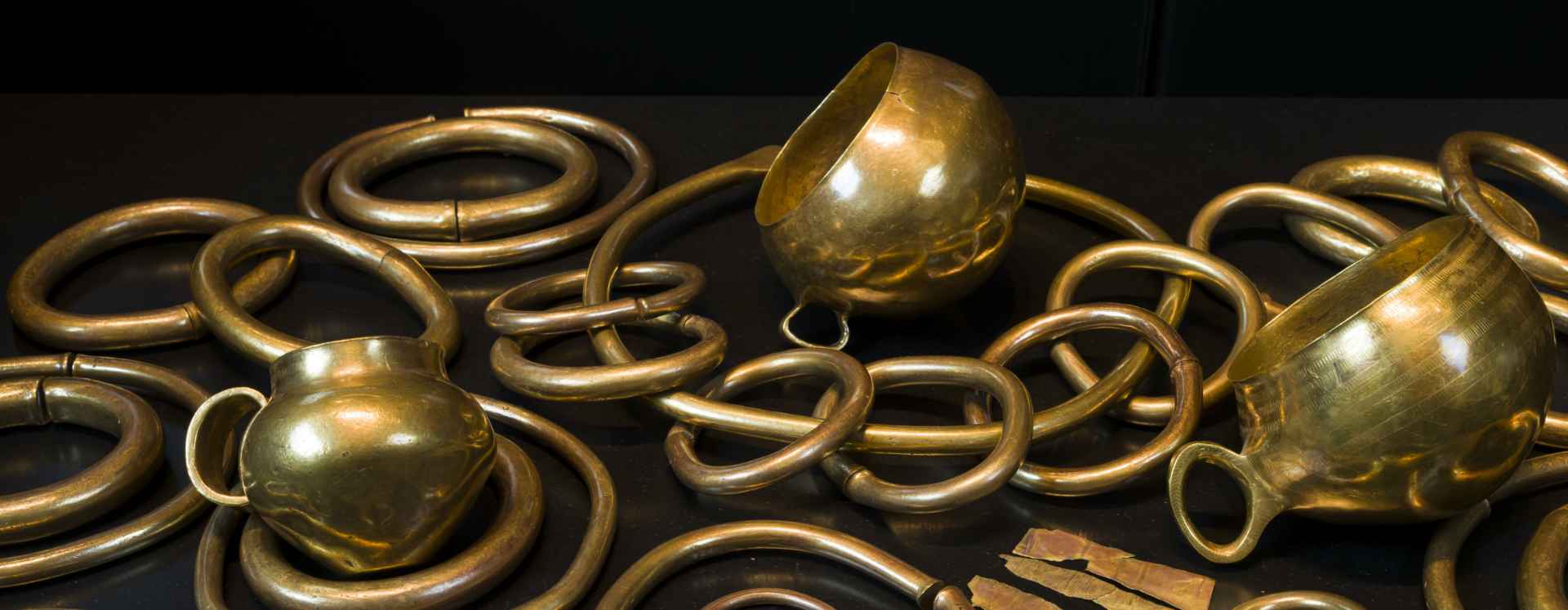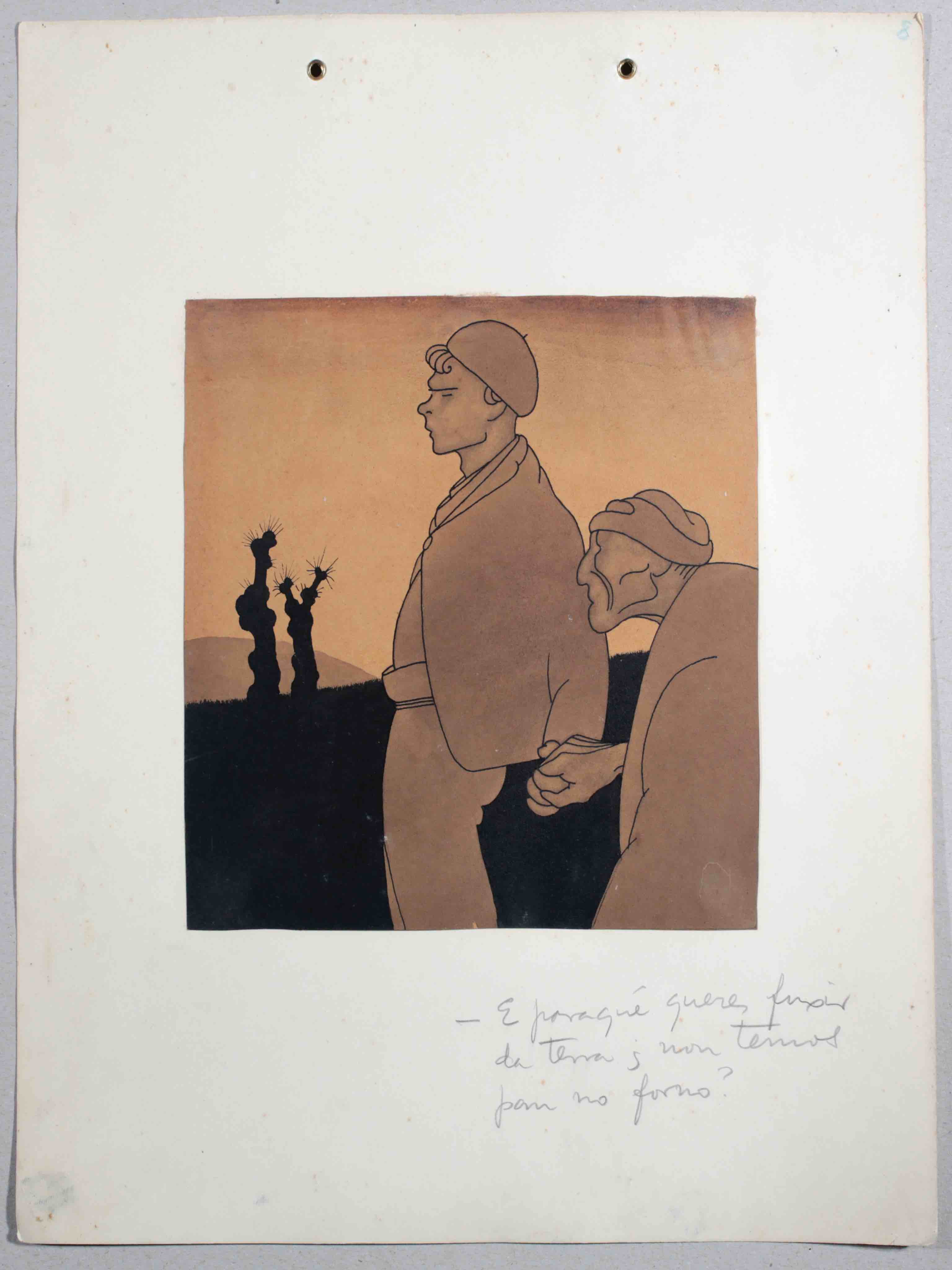E para qué queres fuxir da terra ¿non temos pan no forno?
E para qué queres fuxir da terra ¿non temos pan no forno? [And why do you want to flee from the earth, don't we have bread in the oven?] is one of the fifty-one original drawings created by Alfonso Daniel Rodríguez Castelao for Álbum Nós, published in 1931. In it, along with five other drawings from this series, he depicts the migratory phenomenon that Galicia was experiencing.
The album as a whole is the result of the creative transformation that the artist underwent, motivated by his ideological shift towards Galicianism, which led him to represent the problems of the Galician rural world, managing to capture the psychology and feelings of the characters.
These are drawings in which ochre colours predominate, giving them the appearance of etchings, perhaps inspired by Goya's Los Caprichos series. They are displayed pasted on the original cardboards just as Castelao presented them in the exhibitions he held in the early 1920s in various cities in Galicia and Madrid. They include pencil-written texts that complement and explain them, some with variations from those that would appear in the published album.
This work was the last evolutionary step in a series of drawings on the same theme in which a father tries to convince his son, anxious to set off for a destination full of possibilities, not to emigrate, given the hardships he has to face and the uncertainty that awaits him. In this last creation, the scene is depicted in a more dramatic manner, as can be seen in the representation of the landscape and the characters: now the father is very old, placed to the left of the young man, who still seems more determined and full of dreams.
Alfonso Daniel Rodríguez Castelao (Rianxo, 1886-Buenos Aires, 1950) was a key figure in 20th century Galicia owing to his activities as a painter, exceptional cartoonist, caricaturist, writer in the Galician language and prominent Galician politician.
Two rooms are dedicated to him in the Museum building that bears his name. They show his artistic evolution through a very large group of works, including the series of drawings he called Album Nós. These were created between 1916 and 1918. They were acquired by the Museum in 2021 — after having been found in 2016, having remained unaccounted for since 1931 — when they were published in a luxuriously bound album.
After leaving his profession as a doctor in Rianxo, just a few years after starting, he settled in the city of Pontevedra in 1916 to take up a post as a civil servant in the statistical service. This allowed him to develop his vocation as a painter and draughtsman and to collaborate in various aspects of the cultural life of the city. He participated in the foundation of various entities, among them this museum, which brings together the largest collection of his work.
Label
More information
Castelao had published a drawing with this same theme and similar text in 1915 in La Voz de Galicia in Buenos Aires and in Labor Gallega in Havana, and another in 1918 in the Madrid newspaper El Sol. The Museum of Pontevedra has a drawing with the same characters as the main characters, possibly the forerunner of all of them.
Emigration is the theme most represented in Álbum Nós. There are six scenes in which five moments of this process are shown: from a baby in its cradle with its sister standing in from of it, wondering if this sibling will have to emigrate one day; the young man eager to leave who does not heed his father's advice; the crowd in the port walking with their few belongings to embark; the emigrant on board the ship bound for America, and the returnee who comes back with broken health to die in his homeland. This final motif is depicted in a drawing in the Museum's collection that was eventually replaced in the 1931 publication. The final focus affirms the negative image that the artist offers us of this process.



